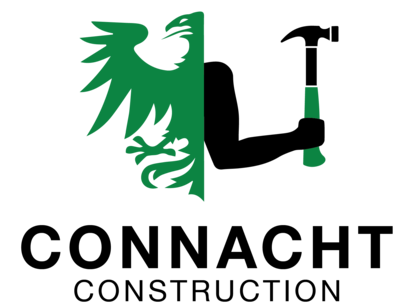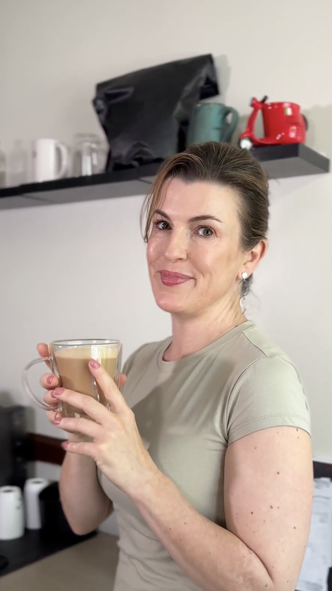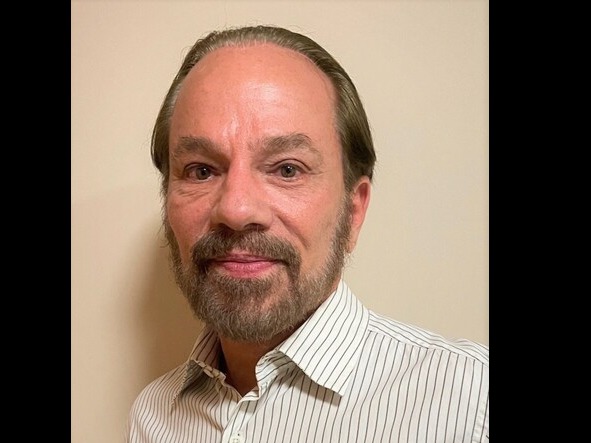By James Lamont, Novato CA
Building Connacht Construction: A Conversation with Liam Headd and Stephanie Forrester
When Liam Headd came to the United States from Ireland in 2002, he couldn’t have predicted that two decades later he’d be running his own construction business in Marin County. But after years of working with other companies and a four-year partnership with another local builder, Liam decided it was time to take full control of his career.
With his wife, Stephanie Forrester, managing design and operations, Connacht Construction was officially launched just a few months ago—and the phone hasn’t stopped ringing since.
From Ireland to Independence
“I’d had enough of giving 50% of the profits to someone else,” Liam says with a laugh. “Now I just work for myself—and thankfully, the work has been steady.”
Stephanie explains that the decision wasn’t sudden. “We’d talked about it for years. We’d done projects together at home, including our own kitchen, so we knew we could make it work.”
Their formula is simple but effective: Liam manages the hands-on construction “from foundation to finish,” while Stephanie handles design, project organization, and all the computer-based tasks Liam would rather avoid.
Balancing Hammers and Hard Drives
While Liam thrives in the field, Stephanie admits the biggest challenge has been aligning schedules for bids and estimates. “I can’t send out a bid until Liam sits down and tells me the scope of work. Sometimes I’m waiting on him, sometimes he’s waiting on me—it’s a work in progress.”
Technology helps, but only to a point.
By James Lamont, Novato CA
Building Connacht Construction: A Conversation with Liam Headd and Stephanie Forrester
When Liam Headd came to the United States from Ireland in 2002, he couldn’t have predicted that two decades later he’d be running his own construction business in Marin County. But after years of working with other companies and a four-year partnership with another local builder, Liam decided it was time to take full control of his career.
With his wife, Stephanie Forrester, managing design and operations, Connacht Construction was officially launched just a few months ago—and the phone hasn’t stopped ringing since.
From Ireland to Independence
“I’d had enough of giving 50% of the profits to someone else,” Liam says with a laugh. “Now I just work for myself—and thankfully, the work has been steady.”
Stephanie explains that the decision wasn’t sudden. “We’d talked about it for years. We’d done projects together at home, including our own kitchen, so we knew we could make it work.”
Their formula is simple but effective: Liam manages the hands-on construction “from foundation to finish,” while Stephanie handles design, project organization, and all the computer-based tasks Liam would rather avoid.
Balancing Hammers and Hard Drives
While Liam thrives in the field, Stephanie admits the biggest challenge has been aligning schedules for bids and estimates. “I can’t send out a bid until Liam sits down and tells me the scope of work. Sometimes I’m waiting on him, sometimes he’s waiting on me—it’s a work in progress.”
Technology helps, but only to a point. They use QuickBooks for estimates, and Stephanie dreams of upgrading to CAD software and iPad renderings. “But nothing’s free,” she notes. “We have to ask: Is it the right investment? Is the ROI there?”
Tools of the Trade: Then and Now
Technology has transformed parts of the building process—especially for subcontractors. Liam recalls a recent countertop project: “The stone guy came in with an iPad and a laser, and the measurements appeared instantly on screen. That used to take hours with wood templates.”
Still, some things haven’t changed much. “A table saw is still a table saw,” Liam says. “You need space for all the fancy tools, and the right job to justify them.”
Marketing in a Modern World
For now, Connacht Construction’s marketing is old-school: word-of-mouth and a strategically placed yard sign. But Stephanie is nudging the business into the digital age. She’s set up Instagram and Facebook accounts and created a QR code decal for Liam’s truck.
“It seems so simple—someone sees the truck, scans the code, and they’re on our website,” she says. “Since COVID, people are used to QR codes. We tested it from 20 feet away, and it works perfectly.”
Looking Ahead
Over the next year, Liam and Stephanie’s goal is to solidify operations and build a strong local presence. Long-term, Liam envisions expanding to a five- or six-person team, with a project manager handling field operations so he can focus on business development.
His advice for young people entering the trades? “Don’t think you know everything. Be open to learning something new every day. You can always swing a hammer, but understanding the technology, the drawings, and the business side—that’s what will set you apart.”

From their mix of traditional craftsmanship and selective tech adoption to their grassroots marketing approach, Connacht Construction is carving out a niche in Marin’s competitive remodeling market. With Liam’s experience, Stephanie’s organizational skills, and a shared commitment to quality, they’re building not just homes—but a business designed to last.
To reach Liam and Connacht Construction, call them at 415-999-7569
or visit them on the web at connachtcustom.com
, and Stephanie dreams of upgrading to CAD software and iPad renderings. “But nothing’s free,” she notes. “We have to ask: Is it the right investment? Is the ROI there?”
Tools of the Trade: Then and Now
Technology has transformed parts of the building process—especially for subcontractors. Liam recalls a recent countertop project: “The stone guy came in with an iPad and a laser, and the measurements appeared instantly on screen. That used to take hours with wood templates.”
Still, some things haven’t changed much. “A table saw is still a table saw,” Liam says. “You need space for all the fancy tools, and the right job to justify them.”
Marketing in a Modern World
For now, Connacht Construction’s marketing is old-school: word-of-mouth and a strategically placed yard sign. But Stephanie is nudging the business into the digital age. She’s set up Instagram and Facebook accounts and created a QR code decal for Liam’s truck.
“It seems so simple—someone sees the truck, scans the code, and they’re on our website,” she says. “Since COVID, people are used to QR codes. We tested it from 20 feet away, and it works perfectly.”
Looking Ahead
Over the next year, Liam and Stephanie’s goal is to solidify operations and build a strong local presence. Long-term, Liam envisions expanding to a five- or six-person team, with a project manager handling field operations so he can focus on business development.
His advice for young people entering the trades? “Don’t think you know everything. Be open to learning something new every day. You can always swing a hammer, but understanding the technology, the drawings, and the business side—that’s what will set you apart.”

From their mix of traditional craftsmanship and selective tech adoption to their grassroots marketing approach, Connacht Construction is carving out a niche in Marin’s competitive remodeling market. With Liam’s experience, Stephanie’s organizational skills, and a shared commitment to quality, they’re building not just homes—but a business designed to last.
To reach Liam and Connacht Construction, call them at 415-999-7569
or visit them on the web at connachtcustom.com
 Add Row
Add Row  Add
Add 



Write A Comment